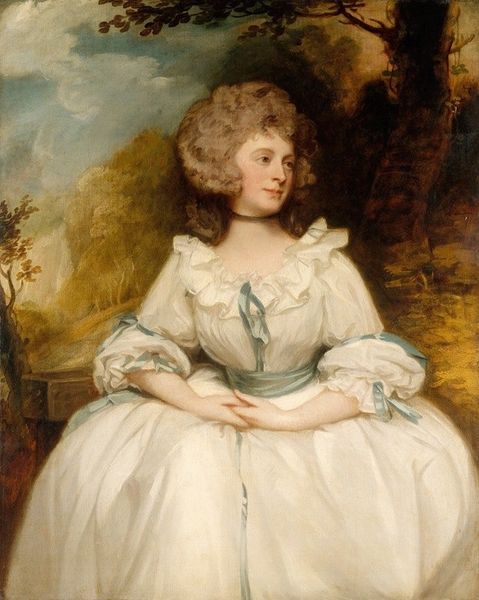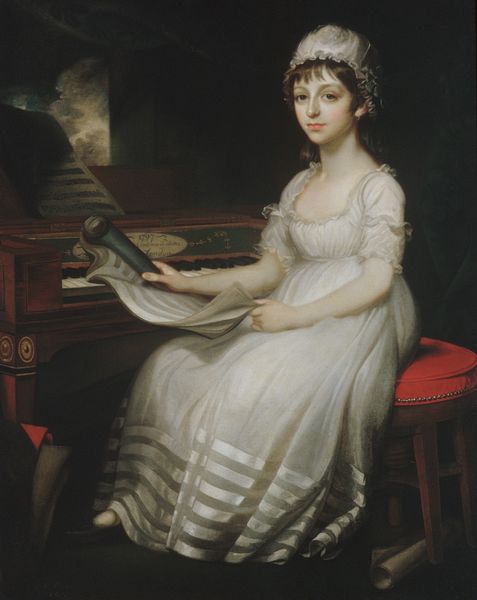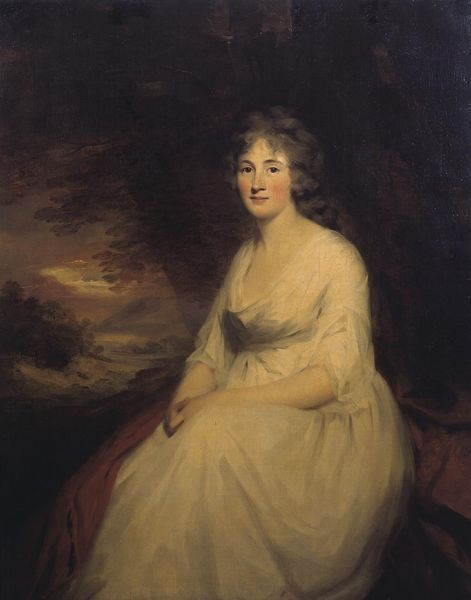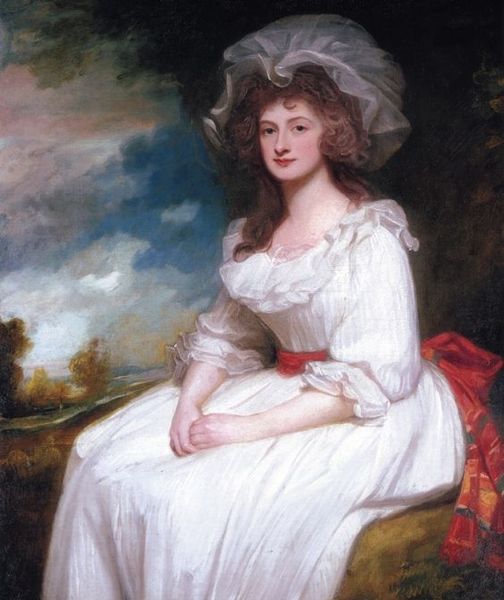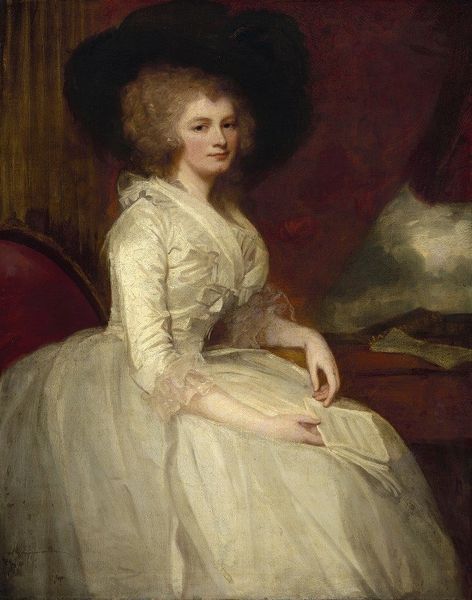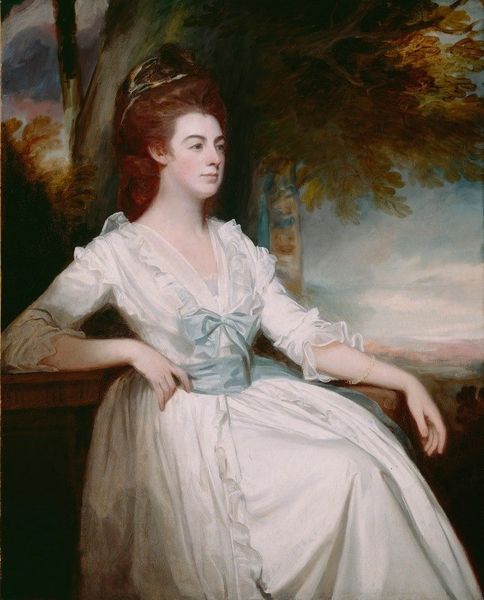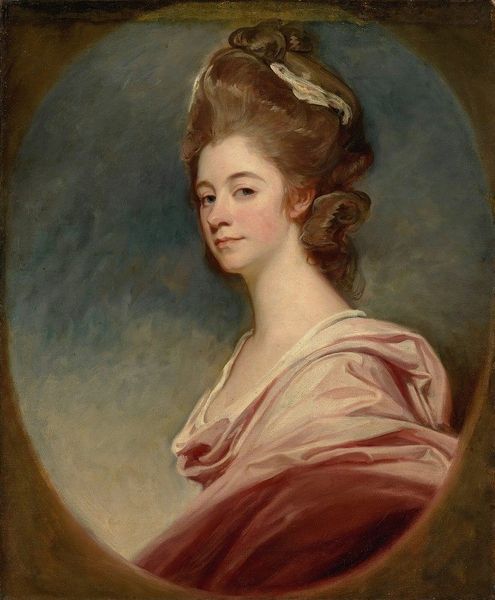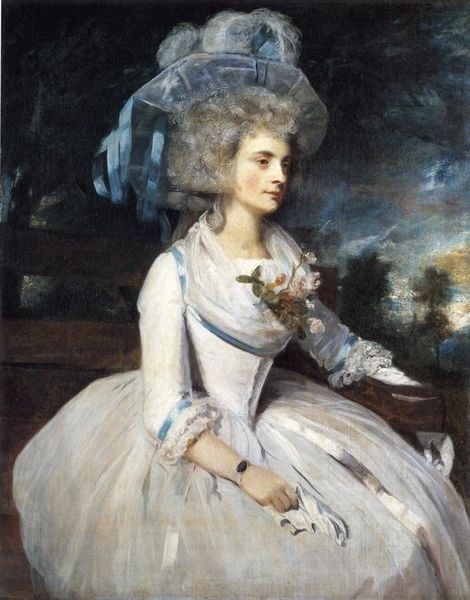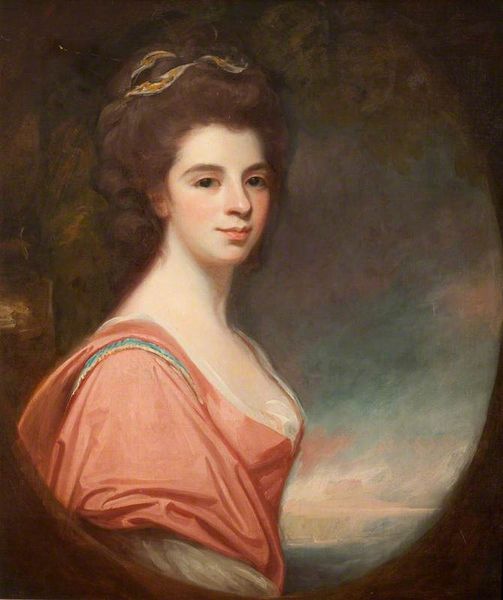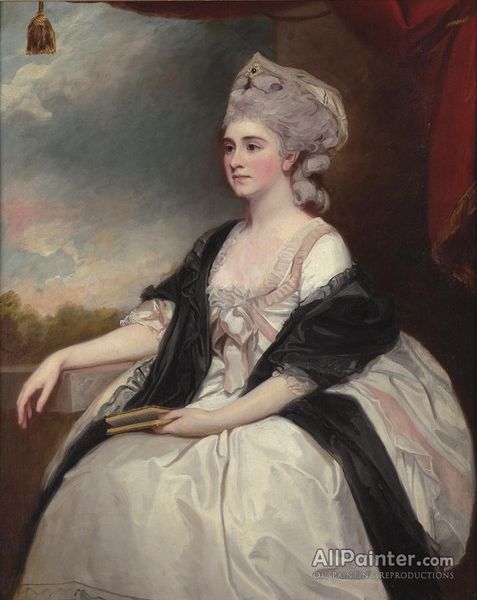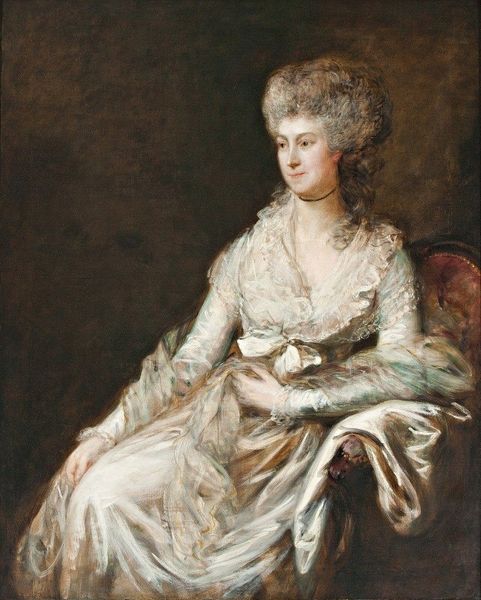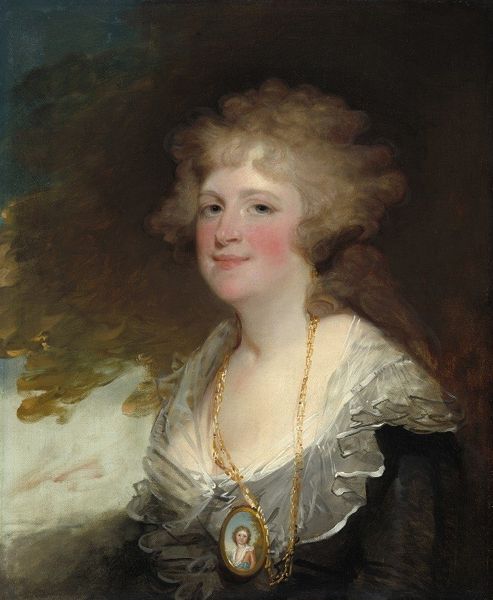
Copyright: Public Domain: Artvee
Curator: Standing before us is George Romney’s portrait of Charlotte, Mrs. Thomas Raikes, painted in 1787. It’s a captivating image of a woman at her keyboard. Editor: My first impression is of ethereal lightness. The delicate brushwork and nearly monochromatic palette create an airy, dreamlike quality. Curator: Absolutely. Romney captures Mrs. Raikes at a moment when women’s accomplishments in the arts were both celebrated and scrutinized. It speaks volumes about the performative nature of femininity in the late 18th century. She's actively engaged with music but also presenting herself to the viewer. Editor: I agree, but what also strikes me is the geometric arrangement. Her stark white dress sharply contrasts the dark background. Her posture, angled towards us, creates an implied diagonal—the viewer's eye moves from her face, down her body, and onto her hands on the instrument. The texture in her ruffled dress and hair give this angularity a delicate framing. Curator: It’s hard not to consider the socioeconomic implications of leisure time in this period. Depicting women in pursuit of artistic talents reinforced social hierarchies and expectations, while the absence of her husband positions her as an individual within a social and political setting that afforded her access to luxury items like musical training. It subtly underscores ideas around agency and societal positioning. Editor: Looking closely, one notes how Romney's skill with light is exceptional. It’s almost as if the landscape is lit from behind. There is something dreamlike about how soft and evenly distributed the color appears. Even her eyes are not a central focus for a typical portrait. Her attire may communicate status and positioning, but Romney is more focused on creating atmospheric harmony than recording pure realism. Curator: It is also about the historical reception of portraiture of women like Mrs. Raikes and the political implications of the white dress: How can we reimagine historical perceptions in the present? Editor: Indeed. While it can serve as a window into the social conditions of the past, its artistic expression remains relevant today.
Comments
No comments
Be the first to comment and join the conversation on the ultimate creative platform.
